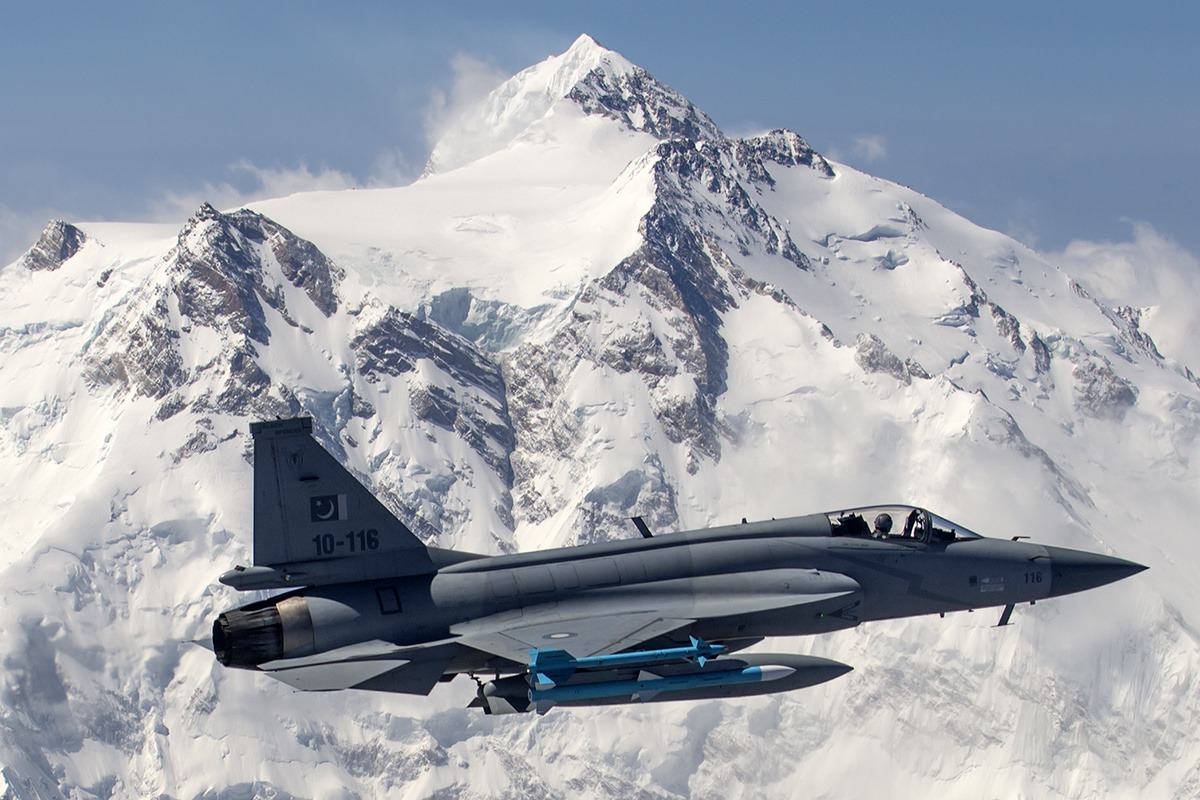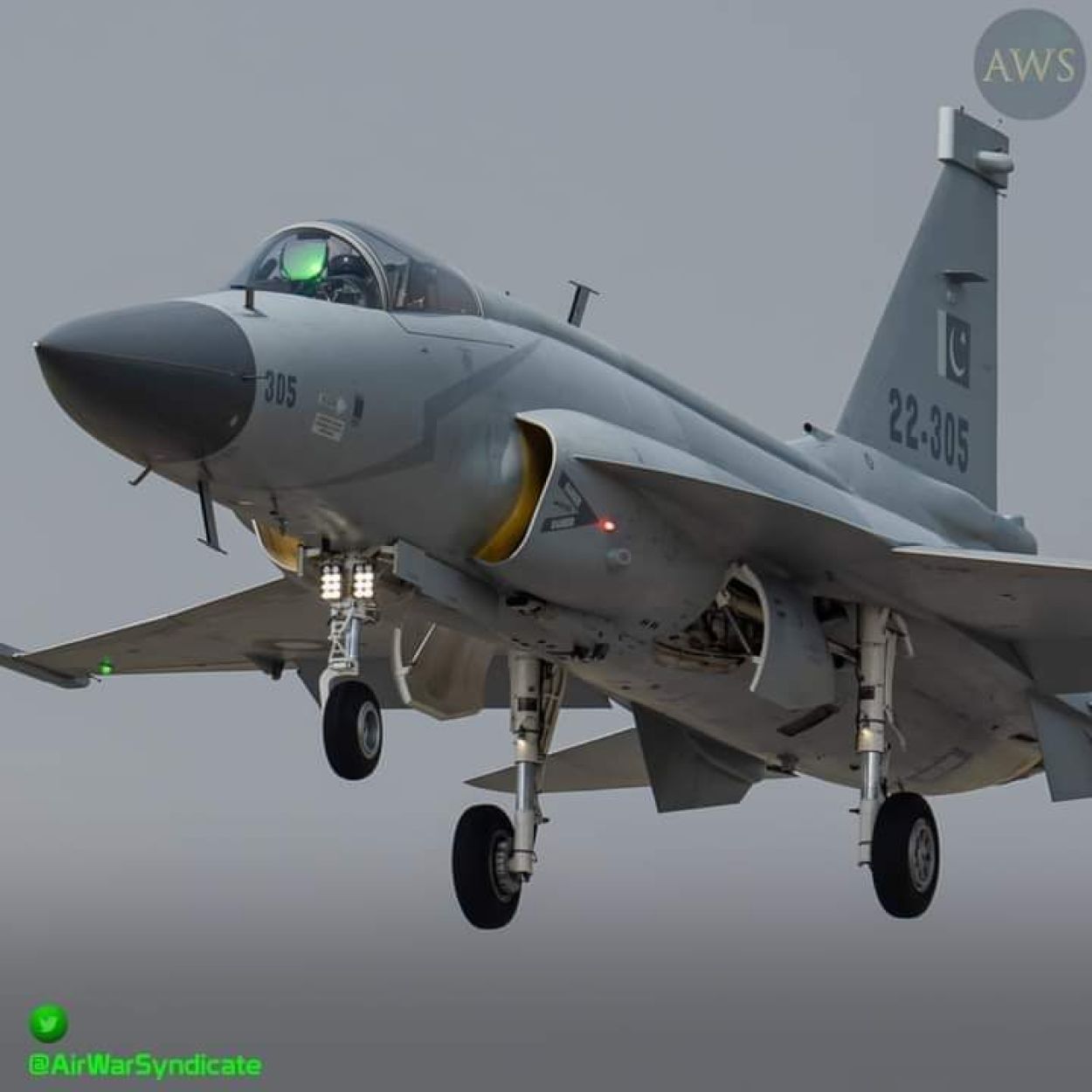As India is reinvigorating its sales pitch to sell ‘Tejas’ Light Combat Aircraft, its bête noir in the West has reportedly struck another landmark agreement to provide 12 JF-17 Thunder Block III fighter jets to the Iraqi Air Force.
Once the deal comes to fruition, Iraq will be the fourth or fifth customer of the JF-17 fighter jets, while India LCA Tejas banks on massive orders from the Indian Air Force.
As reported by the EurAsian Times, this comes close on the heels of Pakistan bagging another multi-million-dollar deal to supply the 12 MFI-17 Super Mushshak trainer aircraft to Zimbabwe.
Pakistani media, the Nation, quoted “credible sources” in the Pakistan Air Force that Pakistan has reached an agreement with Baghdad for US $1.8 billion to supply the 12 units each of the MFI Mushshak trainer and JF-17 fighter aircraft.
The Pakistani newspaper said that the sale follows the landmark agreement for defense cooperation with Iraq. The agreement was inked during talks between visiting Pakistan Air Force Chief Air Chief Marshal Zaheer Ahmed Babar and his counterpart in the Iraqi Ministry of Defense.
The Iraqi side was represented by Secretary General Defense Lt Gen Ahmed Dawood and Lt Gen Shahab Jahid Ali of the Iraqi Defense Ministry. The Iraqi Air Force received its first Mushshak aircraft tranche in 2023. After the successful induction of the aircraft with the Iraqi Air Force, it has opted for the second tranche from Pakistan.
The MFI-17 Super Mushshak is a lightweight, robust, two/three-seater, single-engine aircraft with fixed, non-retractable, tricycle landing gear. It has been developed to meet US FAR 23 certifications in the Normal and Utility categories and can operate from short, unprepared strips.
“After providing 12 more Mushaq trainer aircraft to Iraq, Pakistan would provide twelve JF-Thunder Block III fighter jets to Iraq for which technical details are being worked out,” the report said.
JF-17 and India’s homegrown fighter jet Light Combat Aircraft (LCA) have been in dogfights to win export orders. While the LCA has been unable to open its account, the sale of JF-17 to the Iraq Air Force makes it the fourth customer of Pakistan-China’s joint offering.
Besides Pakistan, the fighters have already been acquired by Nigeria and Myanmar, and Azerbaijan has finalized the deal to acquire them.
The news report asserts that Air Chief Marshal Zaheer Ahmed Babar tried to take the Iraqi defense officials into confidence on the technical prowess of JF-17 aircraft. Iraqi defense officials are expected to visit Pakistan soon and personally inspect these aircraft’s manufacturing at Pakistan Aeronautical Complex (PAC) Kamra.
The JF-17 Thunder combat aircraft is jointly developed by the Pakistan Aeronautical Complex and China’s Chengdu Aircraft Industry Corp. It has a Chinese airframe and Western avionics and is powered by a Russian engine.
With at least 125 aircraft in service, the JF-17 serves as the PAF’s backbone. They were purportedly used to carry out airstrikes against terrorists in northern Pakistan and, according to one account, to shoot down an Iranian-made drone in southern Pakistan in 2017.
JF-17 Thunder is a single-engine, lightweight, multi-role combat aircraft. PAC Kamra has delivered nearly 120 JF-17 Block I and II fighter jets to the PAF since 2009.
Since its induction in the PAF in 2007, the JF-17 has been upgraded several times. The JF-17, with a service ceiling of 50,000 feet and a peak speed of around 1,200 mph, can carry out a variety of tasks, including aerial intercept and ground assault. It can hold around 7,000 pounds of ordnance on seven hardpoints and is equipped with a single twin-barrel 23 mm autocannon.

JF-17 vs LCA Tejas Trade Wars
JF-17 and LCA have been dueling to get a larger share of the defense export pie. The Indian government has been aggressively pushing to sell LCA to foreign countries. In most acquisition processes, the two aircraft compete against each other.
The LCA has emerged as the choice of aircraft for the Indian Air Force (IAF) that is betting heavily on the LCA MK1A and LCA Mk2 variant of the indigenous fighter jet. A Hindustan Aeronautics Limited’s (HAL) official even went to the extent of calling the JF-17 “hazardous” to the pilot’s safety owing to its unreliable engine.
The official pointed out to the EurAsian Times that the LCA is a “more capable, maneuverable, agile, and reliable aircraft than the JF-17”. He also contended that the Chinese Air Force (PLAAF) found the aircraft lacking and had not inducted it into its fleet. The JF-17 was initially powered by a Russian RD-93 engine.
Since its induction in PAF in 2007, it has seen a slew of crashes. There have been reports of the aircraft being grounded several times due to issues like cracks in guide vanes, exhaust nozzles, and flame stabilizers.
“The Chinese then offered their local ‘unproven’ WS-13 engine to JF-17 operators, which was refused by Pakistan for their Block-3 JF-17 fighter jets,” the official said. Unlike the GE-404 engine, which powers many military aircraft globally with an unblemished record, the unproven WS-13 engine of China is riddled with reliability issues. “Without a reliable engine, the JF-17 is very hazardous for pilot’s safety. Chances of mission success are very poor on JF-17 equipped with WS-13 engine,” the official added.
Myanmar, which was the first country besides Pakistan to buy JF-17, was forced to ground its fleet owing to technical malfunctions. Reports suggest the reason behind the grounding in Myanmar was that the airframe of JF-17 reported “vibration issues.”
The Irrawaddy Times notes: “The airframe is vulnerable to damage, especially in its wingtips and hardpoints, when the aircraft encounters strong gravitational forces, according to a former pilot of the Myanmar Air Force.”

The critical part of the JF-17 avionics is the China-made KLJ-7 Al radar, which has poor accuracy and maintenance problems, analysts say. The aircraft does not even have an effective beyond-visual-range (BVR) missile or airborne interception radar.
According to a Myanmar media report: “Malfunction of the Weapon Mission Management Computer has caused launch zones of BVR air-to-air missiles to shrink during combat exercises.”
Mission Nigeria
The Nigerian Air Force, facing challenges from multiple fronts, including separatist movements, piracy, violence within communities, and the Islamist militant group Boko Haram, operates three JF-17s already. The JF-17s were inducted in 2021.
With only 150 aircraft and 15,000 troops, Nigeria’s air force desperately needs modernization. According to the International Institute for Strategic Studies, most of Nigeria’s air force inventory comprises antiquated or aged aircraft, including the Alpha Jet, F-7, and MiG-21.
Besides this, the Nigerian Air Force operates the Chinese Unmanned Aerial Vehicle Wing Loong II.
Nigeria is looking to procure 15 fighter jets to replace its obsolete fleet of Chengdu F-7NI. The existing fleet of Chinese fighter jets gives an unsaid advantage to the Chinese offer. Both LCA ‘Tejas’ (Brilliance) and JF-17 ‘Thunder’ are single-engine multi-role combat aircraft.
India’s Minister of External Affairs, S. Jaishankar, was in Nigeria in January 2024 to put diplomatic force behind the Indian offer of the indigenous fighter jet as it faces stiff competition from the Chinese warplane.
But despite these shortcomings, it seems the JF-17 has become the flag bearer of Pakistan’s defense exports. Even though it is a small order, it is a big boost to Pakistan’s defense industry and economy.
- Ritu Sharma has been a journalist for over a decade, writing on defense, foreign affairs, and nuclear technology.
- The author can be reached at ritu.sharma (at) mail.com
- Follow EurAsian Times on Google News




